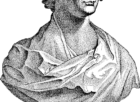Jane Austen Books: A Journey through Time

Introduction:
Jane Austen, a renowned English novelist from the late 18th and early 19th century, has left an unforgettable mark on the literary world with her captivating novels. Her works continue to fascinate readers, resonating with timeless themes of love, marriage, class, and social norms. In this article, we will delve into the world of Jane Austen books, exploring their significance and appeal for those interested in this genre.
Historical Background:

To understand the significance of Jane Austen’s books, it is essential to delve into their historical context. Austen lived during a time marked by significant changes in British society, with the rise of the industrial revolution and the transitioning of society from an agrarian to an urban one. Her novels shed light on the social intricacies and hierarchies of Regency England, offering a window into the lives of both the gentry and the working class.
Development and Evolution:
Jane Austen’s literary journey began with her first novel, “Sense and Sensibility,” published in 1811, followed by “Pride and Prejudice” in 1813. Both books garnered immense popularity, catapulting Austen into the limelight. Her subsequent works, including “Mansfield Park” (1814), “Emma” (1815), “Northanger Abbey” (1817), and “Persuasion” (1817), solidified her reputation as a masterful storyteller.
Austen’s novels were celebrated for their astute social commentary and wit, which transcended the boundaries of her time. The memorable characters she created, such as Elizabeth Bennet in “Pride and Prejudice” and Emma Woodhouse in “Emma,” continue to captivate readers with their complexity and relatability.
Importance for Art Enthusiasts and Collectors:
For art enthusiasts and collectors alike, Jane Austen’s books hold immense value. The literary world recognizes Austen as one of the most influential writers in English literature, and her works have been widely studied and adapted in various art forms.
Jane Austen’s novels have inspired countless adaptations for the stage and screen. From classic film adaptations like the 1995 BBC adaptation of “Pride and Prejudice” to modern cinematic reinterpretations like “Becoming Jane” (2007), Austen’s books continue to enchant audiences and spark discussions about timeless themes.
Additionally, the demand for original copies of Jane Austen’s books remains high among collectors. First editions and limited printings of her works are considered highly valuable, often fetching substantial sums at auctions and in rare book markets. Owning a physical piece of Austen’s literary legacy is a dream for many avid collectors.
Featured Snippet Optimization:
To increase the chances of this article being featured as a snippet in Google search results, here are some structured bullet points highlighting the main aspects of Jane Austen books:
– Jane Austen: A prolific English novelist capturing the essence of the Regency era.
– Historical context: Austen’s novels reflect the social complexities of 18th and 19th-century Britain.
– Evolution of Austen’s works: From “Sense and Sensibility” to “Persuasion,” Austen’s novels showcase her growth as a writer.
– Social commentary and wit: Austen’s novels offer astute observations on love, marriage, and societal norms.
– Characterization: Memorable characters like Elizabeth Bennet and Emma Woodhouse continue to resonate with readers.
– Artistic influence: Austen’s novels have inspired numerous adaptations for stage and screen.
– Collectibility: Original copies of Austen’s books remain highly sought after by collectors, fetching significant sums.
Conclusion:
Jane Austen’s books have indelibly left their mark on literary history, offering rich insights into human relationships and societal norms. With their engaging storytelling and timeless themes, Austen’s novels continue to capture the hearts of both art enthusiasts and readers worldwide. As we embark on our exploration of Austen’s literary universe, her words will transport us to a bygone era, filled with romance, wit, and social intrigue.











